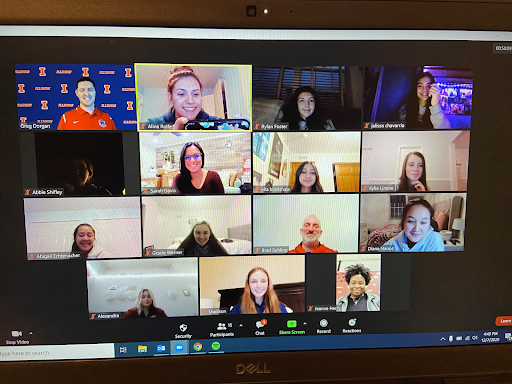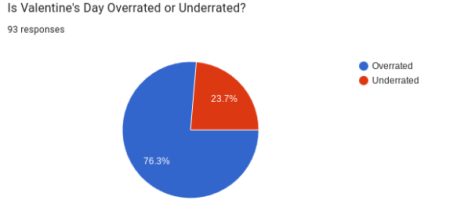Zoom shouldn’t be available for any absent student

Photo submitted by Athletic Department
The girls basketball team meets through Zoom on Dec. 12, 2020, when the school was operating in remote learning mode. Now that the school is in person, some students are finding a Zoom option for schooling even worse than it had been in the previous year. “I have to say that this time attending Zoom was even worse,” Devin Boongaling, sophomore, said. “After actually experiencing what it’s like to be at MHS, I just didn’t enjoy class as much when I was in Zoom this year. I wasn’t able to talk to peers; I couldn’t speak with my teachers.”
October 19, 2021
In the 2020-2021 school year at MHS classes were attended exclusively on Zoom for the first half of the year. In our current school year, however, students may only Zoom into class if they have to quarantine for COVID-19-related reasons. Students out for other reasons are not allowed to attend virtually, which left many asking this: With these virtual resources now available, why shouldn’t any absent student who wants to use that resource be able to do so?
Although a valid question, MHS’s decision to only offer the Zoom-in option for pandemic-related reasons is the correct one.
For one, last year many students remained in remote learning when the school went to concurrent teaching, so in some classes, there might have been more students Zooming in then physically present, but now, the number of students who actually use the Zoom option would be limited. This means teachers can’t afford to give these remote students as much attention to achieve the same quality of an eLearning experience as last year. More importantly, though, students need to get back to in-person learning, which has proven far better for most than remote.
“The [administrative] team believed students would take advantage of this [Zoom option for any away reason], creating a concurrent teaching environment again this year. Based on feedback [about] concurrent teaching last spring, this was something we did not want to continue,” said Mike Pope, assistant principal, who was part of the MHS administrative team that ultimately made the policy. “We also want to get back to normal with students attending class in person as much as possible.”
It’s not just that students would take advantage of the option to Zoom in; it’s also that actual sick students need time to rest and recover.
“If you’re sick, you should just focus on getting back,” Laura Garcia, English teacher, said. “You know all of us have sick days, and if I am sick, I wake up and I’m vomiting everywhere, the last thing I want to do is grade, plan– I don’t want to work– I need a day to rest.”
As for students who are Zooming in for COVID-19 quarantining, many of them have to quarantine given the recommended safety mandates by health officials, but they feel fine; therefore, those who are quarantining for this reason versus those who are actually sick should be given different considerations regarding the use of Zoom.
“I think that attending school in person is what is best for students. If students are genuinely sick, they should take time to rest and recover and focus on catching up when they feel healthy,” Jenna Lumsden, Spanish and AVID teacher, said. “The Zoom option for quarantined students works well because many students need to quarantine but feel healthy, so they should be able to attend school via Zoom.”
Whether students would actually attend the Zoom if they were some Goldilocks-level of sick where they felt too ill to go but not sick enough to need rest is another question.
“I mean most of my students who have logged in on Zoom they’re not putting their cameras on, I’m not over [by the camera], so I don’t really blame [the students who aren’t] doing [Zoom], but I don’t really know if [those who are logging in are ] here to be honest, but that was true last year, too,” Garcia said.
Teachers can’t afford to put as much effort into optimizing the Zoom experience as they have many in-person students they need to pay attention to compared to the one or two students who may be observing via Zoom.
“I’ve tried to do what I can to accommodate students, but if you have one or two possible students online and you have 28 of them sitting in front of you, the 28 sitting in front of you are engaged, and you can see them, and you’re working with them,” Mike Dayton, English teacher said, and added, “It’s not that I choose to or want to ignore kids, but it’s a matter of just turning on the camera, which is pretty simple to do, and then just going about and teaching kids, and I’ve been doing it for 28 years, and I’m not saying I’m good at it, I’m just saying I’ve done it long enough that I can do that in the classroom, and I don’t really worry too much about the Zoom kids.”
Sophomore Devin Boongaling, a student who attended his classes from Zoom while quarantined, said he didn’t get a lot out of his classes while on Zoom.
“I wasn’t able to participate in a variety of things,” he said. “Some examples are group work, watching a class video without Zoom glitches, etc. I understand the many benefits Zoom brings, but I didn’t get much out of it unless it was homework or independent work.”
And teachers recognize simply observing via Zoom isn’t ideal.
“I’ll just put the computer on the front desk facing our whiteboard, so they can see what we’re doing and hear what is happening in the class– probably not ideal for them because they’re listening and looking at a blank smartboard,” Jim Drier, English teacher, said.
But just allowing quarantined students to observe only is what is manageable for the teachers so that they can provide a quality learning environment for the in-person students.
Also, the school has found ways to be more flexible with students’ learning environments over the years, and administration considered allowing absent students to Zoom in now as another level of flexibility.
“The main benefit we talked about was the flexibility this would allow students,” Pope said. “We have been moving in this direction [of flexibility by] offering free periods, opening up off-campus lunch, dress code changes the past few years, and this would have been another way to give students more flexibility.”
Yet, while more flexibility is often appreciated by students, being able to choose to simply stay home is a level of elasticity too far. After all, ultimately, MHS needs to get back to in-person learning, in-person sports, in-person lunch, etc. The experience and learning of everything are amplified ten-fold when doing them physically.
“My guess is that it’s [administration’s] way to encourage any student who is able to be in class [is there] because they know that the best environment for students to learn in is when they’re surrounded by their peers, they’ve got a teacher in front of them [and] they can interact with them,” Drier said.
As a result, the current Zoom policy allows the school to still make adaptations for an unprecedented pandemic while helping students get as normal of a schooling experience as possible.
“We are all doing our best to work through this pandemic, so allowing students who are required to quarantine to still attend virtually is a fair compromise,” Lumsden said. “While some may want it to open for all students, I think that will lead to students opting to stay home whenever they want. As I mentioned before, being physically in class is the best option.”
It’s also worth noting that some classes quite literally can’t operate well through Zoom in their current state.
“I couldn’t even attend my two favorite course electives, band and Honors Media, because the work in that class had to be done in person,” Boongaling said. “There were many things I couldn’t do, and I just felt like I was restricted with my learning experience.”
While some parts of students’ lives are still not as they were before the pandemic, collectively we need to work to get school back to its true state.
“The [administrative] team decided that getting back to normal was important,” Pope said. “We did not want students to miss class for any reason and just attend online. We also did not want to do concurrent teaching again this year based on the data and feedback from last year.”
Boongaling perfectly described the irreplaceable experience MHS offers for in-person learning.
“The days just felt so boring and long [on Zoom]– not that the classes the teachers hosted were boring– it’s just that I feel more active when I’m in person,” Boongaling said. “Everyday felt so lonely, and I just wanted to get going to class on Zoom over with. I just wished I was back in school and back in person because now being in person, MHS brings an in-person school experience that I deem to be unique and fun. Fulfilling. Entertaining.”
